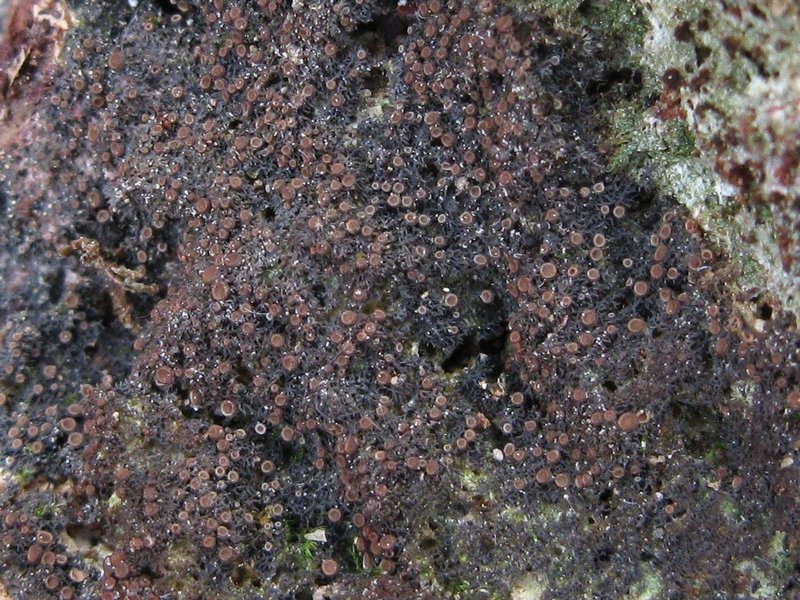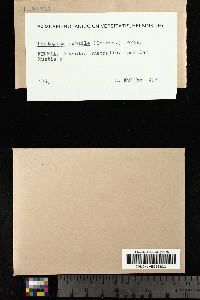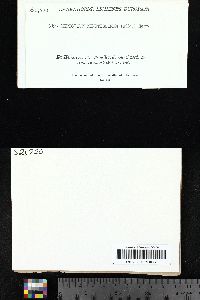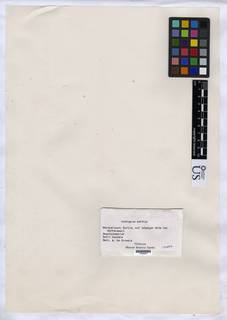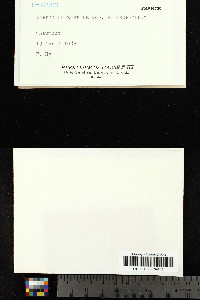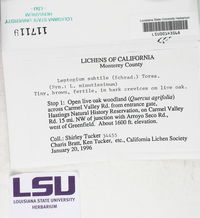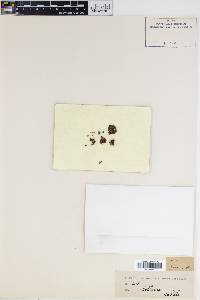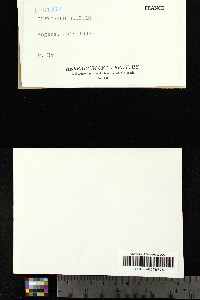
Consortium of Lichen Herbaria
- building a Global Consortium of Bryophytes and Lichens as keystones of cryptobiotic communities -
- Home
- Search
- Images
- Species Checklists
- US States: O-Z >
- US National Parks
- Central America
- South America
- US National Parks
- Southern Subpolar Region
|
|
|
|
Family: Collemataceae
[Collema subtile (Schrad.) Hoffm., moreHomodium subtile (Schrad.) Boistel, Leptogium perminutum Fink ex J. Hedrick, Leptogium subtile (Schrader) Torss., Lichen subtilis Schrad., Parmelia subtilis (Schrad.) Ach., Polychidium subtile (Schrad.) Gray] |
Nash, T.H., Ryan, B.D., Gries, C., Bungartz, F., (eds.) 2004. Lichen Flora of the Greater Sonoran Desert Region. Vol 2. Thallus: minutely foliose, often forming rosettes, lobes coalescing to form a crust-like cushion, 0.5-1.5 cm wide lobes: flattened to cylindrical, elongate, imbricate, often dissected; main branches 1-2 mm wide, 50-90 µm thick; dissected branches: 0.1-0.3 mm wide, often surrounding the apothecia; apices: developing long cylindrical to coralloid isidial-like appendages surface: bluish gray to brown, smooth to granular, not isidiate but with clusters of coralloid outgrowths internal anatomy: with upper and lower cortices consisting of irregularly isodiametrical cells 12-16 µm in diam., internally paraplectenchymatous and with loosely interwoven chains of Nostoc Apothecia: common, laminal, globose, sessile, 0.1-0.8 mm wide disc: orange-brown to almost black, concave to plane margin: thalline, concolorous with the thallus or paler, entire exciple: euparaplectenchymatous but difficult to discern, 10-20 µm thick centrally hymenium: hyaline below and thinly yellow to brown above, 105-180 µm tall; paraphyses: unbranched, c. 1 µm wide, slightly inflated apically; subhymenium: pale gray, 25-35 µm thick asci: cylindricoclavate, 8-spored ascospores: hyaline, submuriform to muriform, (3-)5(-7)-septate transversely, 1-2-septate longitudinally, ellipsoid to subfusiform, 20-31 x 10-12 µm Pycnidia: not observed Spot tests: all negative Secondary metabolites: none detected. Substrate and ecology: on rotting bark, wood or detritus at intermediate elevations World distribution: throughout temperate Europe and occasionally in North America and extending to the Arctic Sonoran distribution: Arizona. Notes: Although Sierk (1964) treated Leptogium subtile as a synonym of L. tenuissimum, it is now widely regarded as a distinct species (see European literature). See under the notes for the latter species. |
Powered by Symbiota

